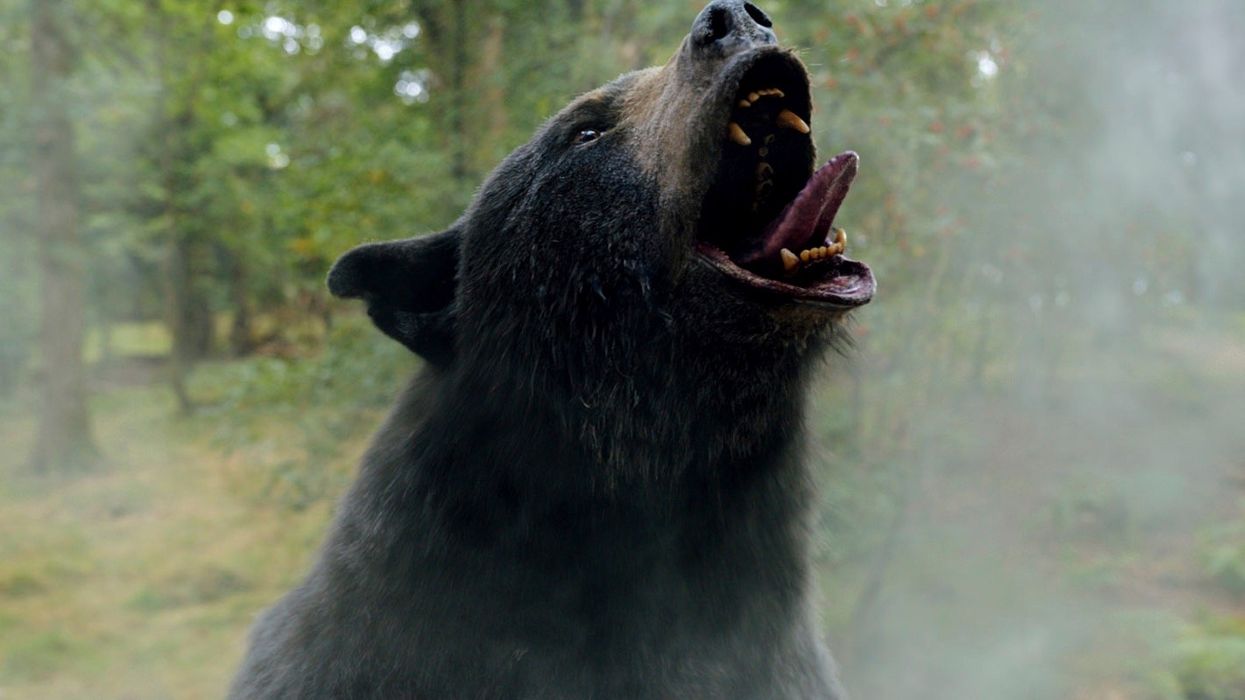Why ‘Cocaine Bear’ FX Team Thinks Their Bloody Bear Bests ‘The Revenant’
No real bears were hurt during the filming of this production.

In this modern age of filmmaking, most productions using animals in films will find a way to ensure the safety of the animals. In a movie about a cocaine-fueled bear on a rampage through the forest, the production could only use CGI bear (obviously).
While computer-generated imagery (CGI) technology has improved greatly in recent years, it can still be difficult to create realistic-looking animals in movies. From the complexity of animal anatomy to movement and behavior to the treacherous uncanny valley, creating a CGI animal that looks photorealistic is a massive challenge that director Elizabeth Banks asked the Oscar-nominated Wētā FX to overcome.
This wasn’t a problem for the team. The company that did most of the VFX on James Cameron’s Avatarfilms is no stranger to creating animated creatures (Gollum, Kong, and creatures on Pandora, and Caesar).
Banks had two requirements when it came to designing the bear for Cocaine Bear: the bear can’t be an inherent killing machine, and she had to look photoreal.
In an interview with IndieWire, Wētā VFX supervisor Robin Hollander said, “The initial brief from Liz on the first call was that the subtlety had to come through. Here’s a story of a mother protecting her cubs, and she’s just fallen victim to the war on drugs if you will. She’s not inherently bad. But there’s no point in doing this if she’s not photoreal.”
How did the Wētā FX team achieve this?
Let’s get into the bloody details.
Creating a Photorealistic Bear
The challenge for the FX team was achieving the balance between a funny and ferocious mother bear. Since it's difficult to get quadrupeds (animals that have four feet) on motion capture stages, the bear had to be completely keyframe-animated.
Explaining the VFX process to the director early on was important for Hollander because it allows them to understand what they should expect from the evolving CG model. A photorealistic bear wouldn’t come into existence right away. Instead, it would take a lot of time building the bear, named Cokie, into the shot once the footage came in.
“It was establishing her expectations so she didn’t freak out or worry that her initial brief wasn’t being met,” Hollander said. “I think she learned a lot about the visual effects process and that really helped build trust.”

“We pitched different animalistic behaviors and the one we referenced often was the sun bear,” Hollander noted. “Because they just look a bit cooked. Their eyes are all over the place, their tongue is really lopsided. They’re quite ferocious when they get into a coconut. That seemed like really fun behavior that we could model the cocaine addiction on, like what would a real bear do?”
As the FX team created the digital bear, Banks wanted the cast and crew to work with a bear performer on set. Allan Henry, who studied mo-cap with Andy Serkis on Planet of the Apes, worked as the performance bear for Cocaine Bear, donning costumes and prosthetics made by Wētā Workshop. The costume and prosthetics included a black lycra foam suit and helmet.

The challenge for the team came when compositing the bear into complex scenes with a lot of design elements.
“My background is as a compositor,” Hollander said, “so putting things in a scene that has a lot of twigs, branches, bushes, shrugs is really tricky. Then there’s the mauling at the end. We had Allan drag the actress [Hannah Hoekstra] through the bush, which meant we had stunt pads that we had to remove. We had to create roto mats for all the bushes and whatnot; we had to remove Allan and we had to add Cokie back in. Actually, it was a very challenging sequence for integrating her.”

Is Cokie the Best CGI Bear in Film and TV?
Cokie isn’t the first photorealistic CGI bear to appear on the silver screen. That honor goes to The Revenant bear, which had Andy Serkis in a blue suit behaving and attacking Leonardo DiCaprio like a bear.
The bear from The Revenant, which was created by Industrial Light & Magic (ILM),became the source material for Wētā FX design. Unfortunately, the exact design of the bear wouldn’t work for Cocaine Bear since Cokie wouldn’t be used for shock value and would be seen on screen for a majority of the film’s runtime.

There are times when watching the movie that the bear doesn’t look real, but it could be a part of our brains that knows when something is and isn’t real. That being said, the bear does look great when compared to other CGI creatures in recent films and TV shows. To create a realistic-looking creature, have the animal interact with the settings and show its real impact on the world around it.
CGI animals are looking more and more photorealistic. While the technology isn’t there yet, deep research into anatomically correct modeling will improve and bring us closer as the tech improves.
What did you think of the bear’s appearance in Cocaine Bear? Do you think Cokie looks more real than the bear from The Revenant?
Let us know your thoughts in the comments!
Source: IndieWire












